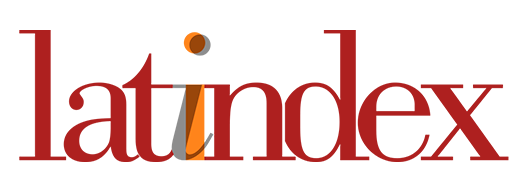Perovskite Reimagined: A Comprehensive Exploration of Its Influence on Ceramic Science and Technology
DOI:
https://doi.org/10.62486/agmu2025194Keywords:
perovskite structure, piezoelectric, ferroelectric, electronic devicesAbstract
Introduction; The perovskite structure, characterized by the general formula ABX₃, has been a cornerstone in ceramic science and technology due to its remarkable versatility and adaptability. From the earliest insights of Goldschmidt linking material structure to composition, the perovskite structure emerges as a quintessential demonstration of this principle.
Objective; Known for its remarkable adaptability, the perovskite framework can accommodate a vast array of compositional variations, enabling the creation of materials with diverse properties such as dielectric, conductive, and superconductive behaviors. Among these, barium titanate (BaTiO₃) stands out as a prime example of a perovskite that can be fine-tuned to achieve enhanced dielectric characteristics, leading to widespread industrial usage. The capacity of perovskites to endure extreme environmental conditions, including the immense pressures found in Earth’s interior, underscores their relevance not only in technology but also in geological research.
Method; Recent explorations into piezoelectric and ferroelectric applications highlight the cutting-edge potential of these materials for future innovations. By adjusting perovskite compositions, researchers can systematically optimize functionalities across multiple sectors, ranging from consumer electronics to advanced scientific instrumentation.
Result; This paper aims to offer a thorough review of perovskite materials, emphasizing the interplay between their structural versatility and practical utility.
Conclusion; Through an examination of novel findings, the authors shed light on the continuing evolution of perovskite research, illuminating both the foundational science and the growing array of real-world applications and future directions.
References
Bhalla AS, Guo R, Roy R. The perovskite structure—a review of its role in ceramic science and technology. Mater Res Innov. 2000;4(1):3–26. DOI: https://doi.org/10.1007/s100190000062
Swierczek K, Gozu M. Structural and electrical properties of selected La1-x Sr x Co0. 2Fe0. 8O3 and La0. 6Sr0. 4Co0. 2Fe0. 6Ni0. 2O3 perovskite type oxides. J Power Sources. 2008;173(2):695–9. DOI: https://doi.org/10.1016/j.jpowsour.2007.05.052
Goldschmidt VM. Über das krystallochemische und geochemische Verhalten des Germaniums. Naturwissenschaften. 1926;14(14):295–7. DOI: https://doi.org/10.1007/BF01503585
Müller WA, Leitz T. Metamorphosis in the Cnidaria. Can J Zool. 2002;80(10):1755–71. DOI: https://doi.org/10.1139/z02-130
Jaffe B, Cook WR, Jaffe H. The piezoelectric effect in ceramics. Piezoelectric Ceram. 1971;7–21. DOI: https://doi.org/10.1016/B978-0-12-379550-2.50006-5
Tokura Y. Multiferroics as quantum electromagnets. Science (80- ). 2006;312(5779):1481–2. DOI: https://doi.org/10.1126/science.1125227
Mogensen M, Sammes NM, Tompsett GA. Physical, chemical and electrochemical properties of pure and doped ceria. Solid state ionics. 2000;129(1–4):63–94. DOI: https://doi.org/10.1016/S0167-2738(99)00318-5
Liu M, Johnston MB, Snaith HJ. Efficient planar heterojunction perovskite solar cells by vapour deposition. Nature. 2013;501(7467):395–8. DOI: https://doi.org/10.1038/nature12509
Cheong SW, Mostovoy M. Multiferroics: a magnetic twist for ferroelectricity. Nat Mater. 2007;6(1):13–20. DOI: https://doi.org/10.1038/nmat1804
Noheda B, Cox DE, Shirane G, Park SE, Cross LE, Zhong Z. Polarization rotation via a monoclinic phase in the piezoelectric 92% PbZn 1/3 Nb 2/3 O 3-8% PbTiO 3. Phys Rev Lett. 2001;86(17):3891. DOI: https://doi.org/10.1103/PhysRevLett.86.3891
Shellaiah M, Sun KW. Review on sensing applications of perovskite nanomaterials. Chemosensors. 2020;8(3):55. DOI: https://doi.org/10.3390/chemosensors8030055
Downloads
Published
Issue
Section
License
Copyright (c) 2025 Md Tanweer Alam, Awadesh Prasad (Author)

This work is licensed under a Creative Commons Attribution 4.0 International License.
The article is distributed under the Creative Commons Attribution 4.0 License. Unless otherwise stated, associated published material is distributed under the same licence.





